My husband and I have thrown dinner parties for years, but I always thought of them as big social occasions — a reason to haul out John’s mom’s silver, to set a proper table with fresh flowers and present a multi-course sit-down meal.
We started hosting weekday spaghetti suppers late last year, inspired by our friend Pableaux’s weekly red beans and rice dinners, and they’re a totally different take.
Of course they share the most important aspect — enjoying food with friends — but the approach is fundamentally different. Pableaux’s red beans suppers are intentionally loose, with everyone serving him or herself in the kitchen then sliding into a spot at a big table with a stack of spoons and a roll of paper towels. Sometimes the number of guests means tight quarters, but no one complains because the conversation is good and there’s plenty of food.
Adjusting my approach took some practice. Here’s what I’ve learned:
1. I make my spaghetti sauce on the weekend. That gives it a few days for the flavors to mingle before serving, but it also means my actual cooking on a weeknight is greatly reduced. I boil water for spaghetti and grate some cheese, John buys a loaf of bread that he slathers with butter and fresh garlic. Sometimes I pour olives into a bowl.
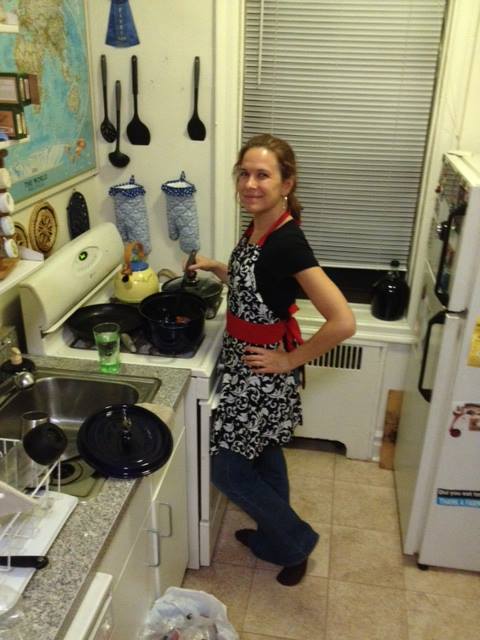
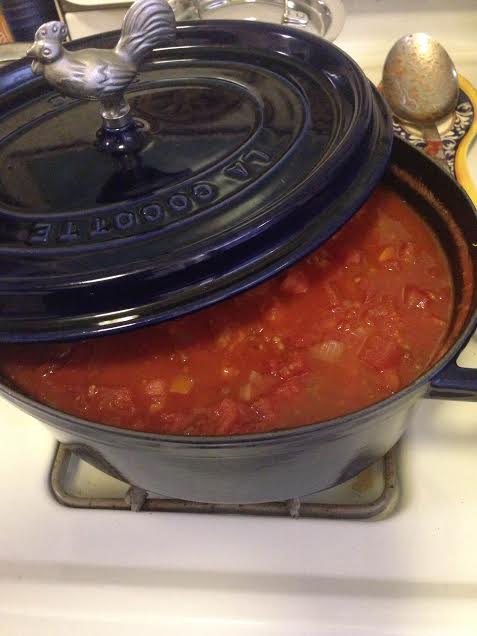
2. I keep the menu simple. It’s spaghetti and garlic bread. The end. No salad to start. No side dish of broccoli. No dessert. This keeps the prep manageable, it means anyone who arrives late-ish or leaves early isn’t committed to a drawn out affair, and it helps with clean up. Which leads to …
3. I use only dishes that go in the dishwasher. At our first spaghetti night, John made a side of greens and served them in a lovely bowl that has to be hand washed, and we used wine glasses that don’t fit easily in our dishwasher. As a result, we had a counter full of dirty dishes. After that, I went rustic Italian and bought a dozen juice glasses for wine because we can fit them all on the top shelf, making clean up faster.
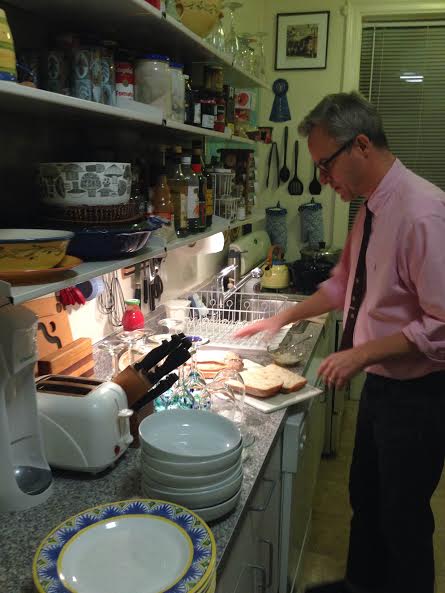
4. I don’t set the table. I put out stacks of plates and pasta bowls in the kitchen, letting people choose which they prefer, and put stacks of the rustic wine glasses, stacks of water glasses, a pile of napkins and forks upended in a wine glass on the table. Then people serve themselves. There’s something intimate about grabbing your own plate and scooping out your own food. You’re less a guest and more family.
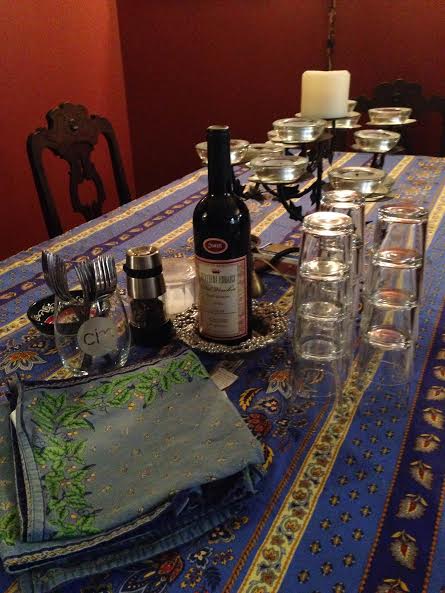
5. I don’t sweat the exact numbers. I assume someone will cancel. It’s a weeknight so work might run late, or someone’s kid might get sick, or any number of other variables might intrude. We can seat eight people at our dining table so that’s my ideal number, but I take enough RSVPs for 10 total, including us. Sometimes that means a few people slurp noodles sitting at our coffee table. Often it means we all fit at the dining table after a last-minute cancellation. One supper we had several last-minute requests to attend, including friends who had a house guest with a canceled flight home. Pableaux shared the wisdom that the people who are supposed to be there will be there, so I figure it’ll all be fine.
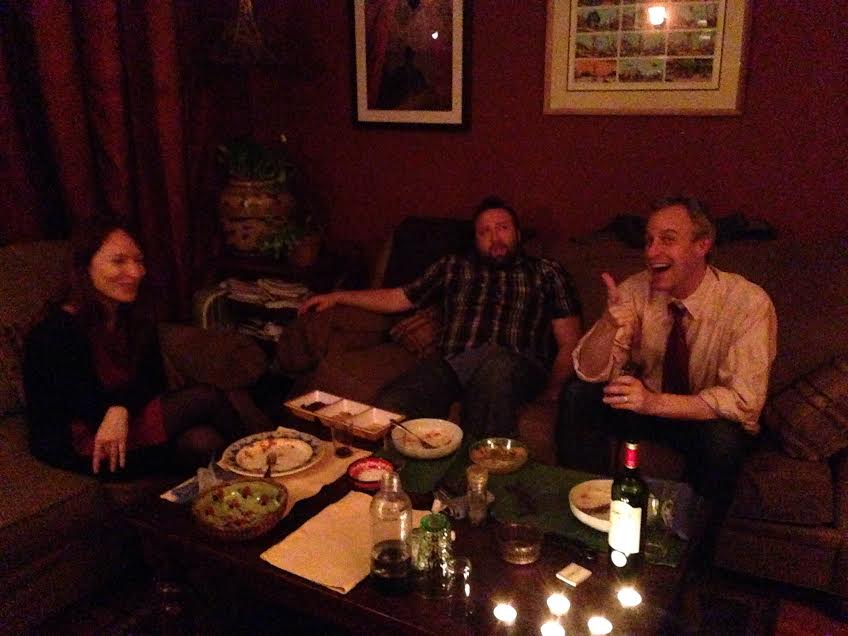
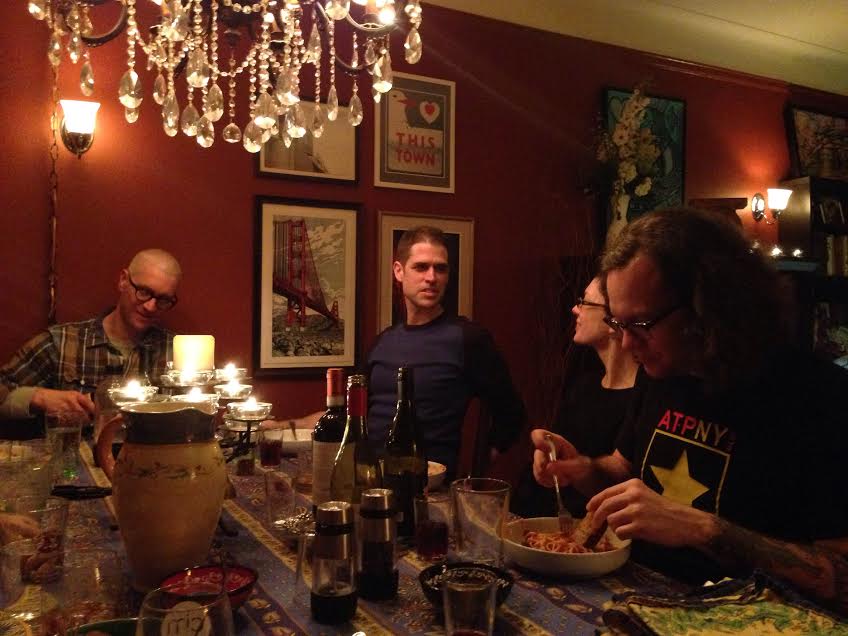
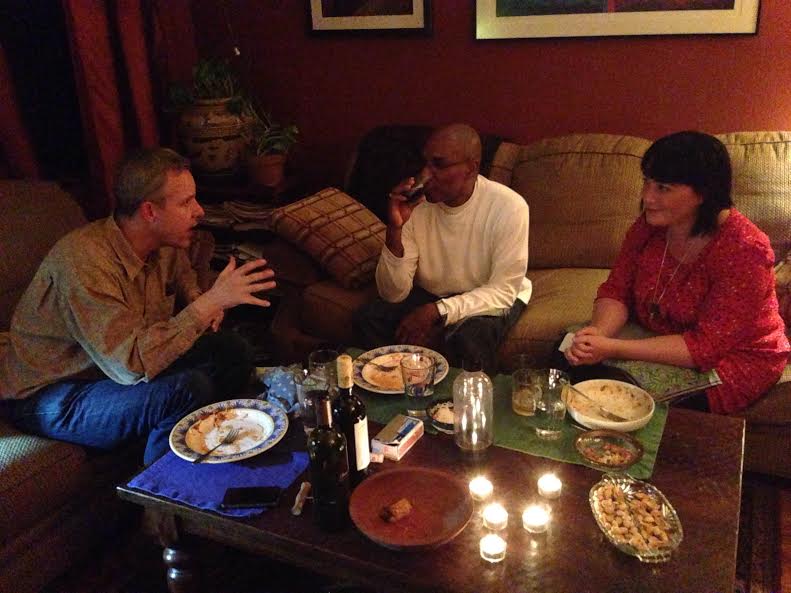
My goal is to keep my focus on enjoying my guests. I love that I’ve cooked for them but I don’t want to be stuck at the stove. I want to be in the living room, talking and laughing.
There’s such a wonderful connection that comes from sharing a home-cooked meal. It doesn’t need to be fancy or perfect. We’ve sat on the floor at a friend’s coffee table, we’ve balanced our plates on our laps on more than one friend’s couch, we’ve stood holding plates outdoors … and who’s going to complain if they’re having a good conversation over food shared in generosity?
If you’ve been holding back from hosting because your dishes are mismatched or you don’t have a dining room or any other reason, maybe a casual weekday supper is a good place to start?

Pointers on hosting simple weekday suppers
